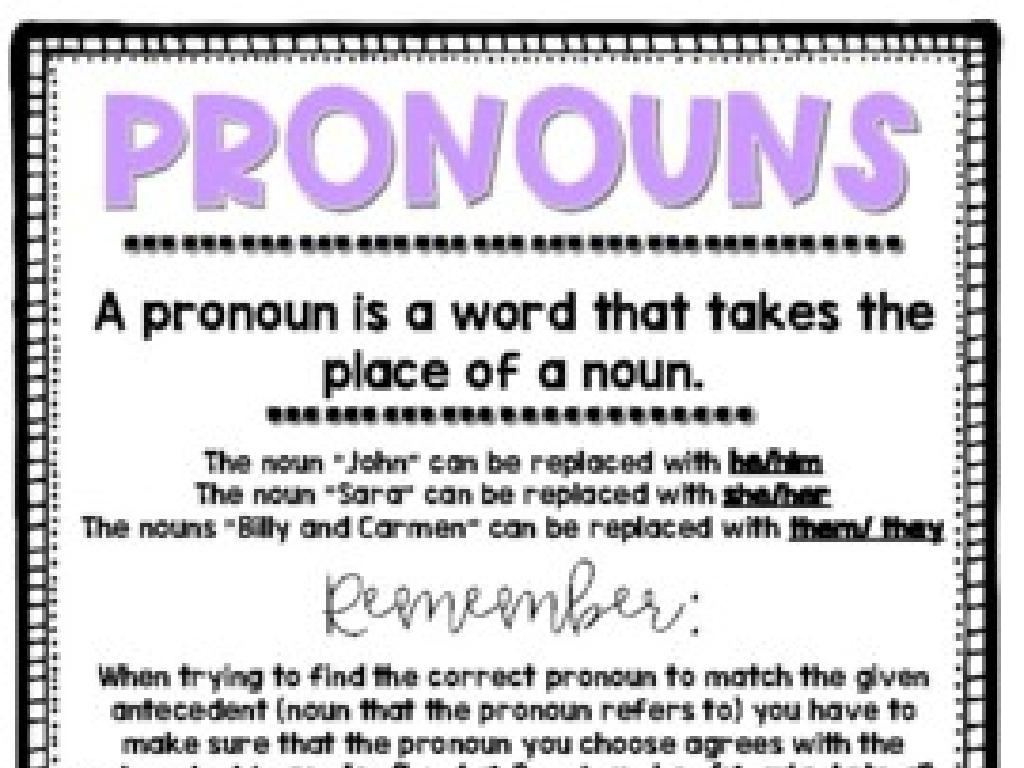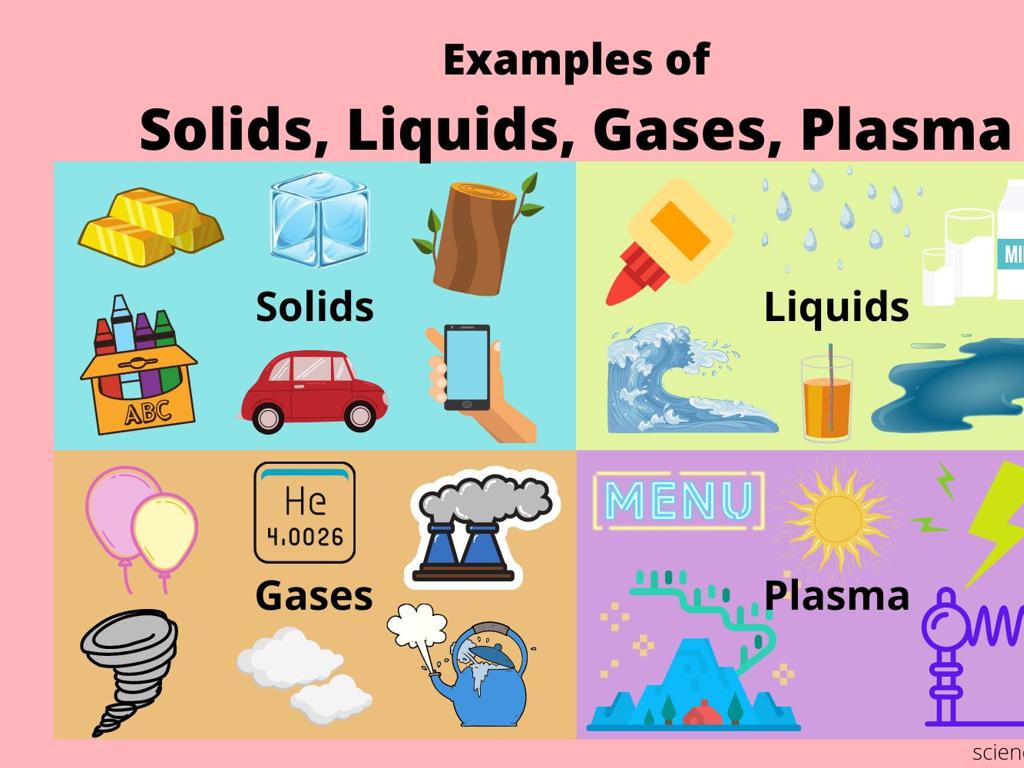Multiply And Divide Rational Numbers: Word Problems
Subject: Math
Grade: Eighth grade
Topic: Rational Numbers
Please LOG IN to download the presentation. Access is available to registered users only.
View More Content
Multiplying & Dividing Rational Numbers
– Define rational numbers
– Numbers that can be expressed as a fraction a/b, where a and b are integers and b is not zero.
– Daily life rational number examples
– Money, cooking measurements, and time are common examples.
– Multiplying rational numbers
– When multiplying, simply multiply the numerators and denominators respectively.
– Dividing rational numbers
– For division, multiply by the reciprocal of the divisor.
|
This slide introduces students to the concept of rational numbers and their practical applications in everyday life. It’s crucial to ensure that students understand a rational number can be written as a fraction with an integer numerator and a non-zero integer denominator. Provide relatable examples such as money (e.g., $0.75), cooking (e.g., 1/2 cup of sugar), and time (e.g., 3/4 hour). Then, guide students through the process of multiplying and dividing rational numbers, emphasizing the multiplication of numerators and denominators for multiplication, and the use of the reciprocal for division. Encourage students to solve word problems involving these operations to solidify their understanding.
Understanding Rational Numbers
– Define rational numbers
– Numbers that can be expressed as a fraction a/b, where a and b are integers and b is not zero.
– Rational vs. irrational numbers
– Rational numbers have a clear fraction or decimal representation, while irrational numbers cannot be expressed as a simple fraction.
– Identifying rational numbers
– Look for numbers that can be written as fractions, including integers, because they can be expressed as a fraction with a denominator of 1.
– Application in word problems
|
This slide introduces the concept of rational numbers, which are any numbers that can be expressed as a fraction with an integer numerator and a non-zero integer denominator. It’s crucial to distinguish between rational and irrational numbers, as this understanding is foundational for working with algebraic expressions and solving word problems. Emphasize that all integers, finite decimals, and repeating decimals are rational because they can be written as fractions. Provide examples of rational numbers and contrast them with examples of irrational numbers like pi (À) or the square root of 2. Encourage students to practice identifying rational numbers in various forms and to apply this knowledge when approaching word problems involving multiplication and division of rational numbers.
Multiplying Rational Numbers
– Understand rules for multiplication
– Multiply numerators and denominators separately
– Remember the sign rules
– Positive x Positive = Positive, Negative x Negative = Positive, Positive x Negative = Negative
– Example: Multiplying fractions
– Multiply 3/4 by 2/5: (3×2)/(4×5) = 6/20, which simplifies to 3/10
– Example: Multiplying decimals
– Multiply 0.5 by -2.3: 0.5 x -2.3 = -1.15
|
This slide introduces students to the concept of multiplying rational numbers, both fractions and decimals. Start by explaining the rules for multiplication, emphasizing the process of multiplying numerators and denominators separately for fractions. Highlight the importance of keeping track of signs, as the product of two rational numbers can be positive or negative depending on the signs of the numbers involved. Provide clear examples, one with fractions and another with decimals, to illustrate the process. Encourage students to practice with additional problems and to pay careful attention to the signs to ensure accuracy in their calculations.
Dividing Rational Numbers
– Understand division rules
– Division is multiplication by reciprocal
– Invert the divisor method
– Flip the second number before multiplying
– Divide fraction by whole number
– Example: 1/2 ÷ 4 becomes 1/2 x 1/4
– Practice with real examples
– Solve problems to reinforce concept
|
This slide introduces students to the concept of dividing rational numbers, focusing on the rules and methods involved. Start by explaining that division of rational numbers can be thought of as multiplying by the reciprocal of the divisor. Emphasize the importance of remembering to invert the divisor before multiplying. Provide a clear example by dividing a fraction by a whole number, such as 1/2 ÷ 4, and demonstrate how it becomes a multiplication problem (1/2 x 1/4). Encourage students to practice with additional examples and word problems to solidify their understanding. The goal is for students to become comfortable with these steps and to apply them to various types of division problems involving rational numbers.
Multiplying Rational Numbers: Word Problems
– Apply skills to real-life situations
– Example: Calculating discounts
– If a $50 shirt is 20% off, what’s the new price?
– Group practice with word problems
– Work together to solve problems involving multiplication of fractions and decimals
– Discuss strategies and solutions
– Share different approaches to solving problems
|
This slide aims to help students apply their knowledge of multiplying rational numbers to real-world scenarios. Start with an engaging example, such as calculating discounts, which is a practical application of multiplication with decimals. Move on to group practice, where students can collaborate on word problems that require them to multiply rational numbers. Encourage them to discuss their strategies and how they arrived at their solutions. This collaborative approach not only reinforces their understanding but also allows them to see multiple methods for solving problems. Provide guidance and support as needed, and ensure that each group understands the steps involved in solving these types of word problems.
Word Problems: Division with Rational Numbers
– Grasping division in daily life
– Recipe division example
– If a recipe for 4 needs to be for 6, how to adjust?
– Group practice on division
– Solve problems together, apply division in scenarios
– Discussing rational number division
– Understand division with fractions, decimals
|
This slide aims to contextualize the concept of division with rational numbers through relatable daily life examples and collaborative practice. Start by discussing how division is used in everyday situations, such as dividing a pizza among friends or splitting a bill. Use the recipe example to show how quantities can be adjusted for different numbers of servings, which involves dividing. During group practice, encourage students to work together on word problems that require division of rational numbers, including fractions and decimals. This will help them understand the practical application of the concept and enhance their problem-solving skills. Provide guidance on how to approach dividing different forms of rational numbers and ensure to clarify any misconceptions.
Class Activity: Rational Numbers Relay
– Form teams for problem-solving relay
– Each member solves a step of the problem
– Pass the problem to the next teammate
– First team with correct solution wins!
|
This activity is designed to encourage teamwork and understanding of multiplying and dividing rational numbers through a relay race format. Divide the class into small groups, and give each team a multi-step word problem involving rational numbers. Each student in the team is responsible for solving one step of the problem before passing it on to the next member. This will require students to communicate effectively and ensure each step is correctly solved. The first team to reach the correct solution wins. Possible variations of the activity could include different word problems for each team, timed rounds, or bonus challenges for extra points. Ensure that the problems are of appropriate difficulty for the grade level and that all necessary materials are prepared in advance.
Review and Homework: Rational Numbers
– Recap multiplying/dividing rational numbers
– Address questions from today’s lesson
– Homework: practice problem set
– Solve problems involving multiplication/division of fractions, decimals
– Emphasize understanding, not just completion
– Focus on the process and steps taken to solve problems
|
This slide is meant to wrap up the day’s lesson on multiplying and dividing rational numbers. Begin with a brief review of the key concepts and methods used in today’s lesson. Open the floor for any questions students may have, ensuring they feel comfortable with the material before moving on. Assign a set of practice problems for homework that covers a range of difficulties and includes both multiplication and division of fractions and decimals. Remind students that the goal of the homework is to understand the processes involved in solving these types of problems, not just to get the right answer. Encourage them to show their work and to review their steps if they arrive at an incorrect solution. For the next class, plan to review the homework answers and discuss common challenges or errors that may have arisen.






